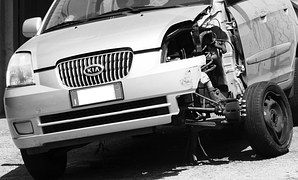My Car Does Not Have A Lot of Damage. Does That Mean I Was Not Hurt?
It is a classic, prototypical, archetypal, insurance defense argument, advanced in thousands of courtrooms, thousand of times a day. As Attorney Eric T. Kirk will tell you.
There is no visible property damage to the cars. Therefore, there could be no damage to the bodies of the occupants of those cars.
A more relaxed, refined version of the argument runs:
There is no visible property damage to the cars. Therefore, there could be no injury requiring more treatment that a cursory emergency room evaluation.
The argument assumes, at its core, there is some scientific or medical correlation between property damage that can be perceived by the human eye, and depicted in a photograph, and injury to the human body.
There is not one.
In fact, many contend the opposite is true. “Even though sustained in low-velocity, rear-end collisions, …. acceleration injury can produce forces significant enough to produce musculoligamentous tears with resultant hemorrhage and even disk disruption and avulsion fractures of the vertebral bodies.” 1

The insurance industry likes the idea that cars can be involved in collisions, and not appear to be, or indeed not be, seriously damaged. If the car is not damaged, there is less to repair, and less repair related expense. But there are other reasons. An illustration is found in the history of federal laws and regulations governing bumpers. Bumpers are designed so that there is no damage to the vehicle at certain low-speed collisions. The federal rule provides that “the purpose of this standard is to reduce physical damage to the front and rear ends of a passenger motor vehicle from low-speed collisions.49 CFR § 581.22 “Before 1982, federal safety standards required cars to have bumpers that could withstand a 5-m.p.h. collision without serious damage to the car’s frame or body and only inconsequential damage to the bumper.” 3 The Reagan administration lowered the ‘no damage’ standard. Modern bumpers are designed to specifically show no damage to the car at collisions of less than 2.5 mph, but the bumper can show damage. Not surprisingly, the insurance industry lobbied heavily against the change. “The insurance institute and insurance companies have been lobbying to maintain the existing [ 5 mph] standard.” 4 Why? Although the no “property damage/no injury” argument was likely not as widespread in the early 80’s, of course, the insurance industry liked the idea that cars can be involved in higher velocity impacts without visible damage. It allows their adjusters and attorneys to minimize the accident, minimize the damage, and minimize the effects on the occupants.
Insurance companies deny thousands of claims daily. They hire sophisticated lawyers who make persuasive arguments in court. Those who have no been through the process are often amazed and sometimes overwhelmed, by the level of resistance to the payment of claims. I extend a complimentary case analysis and opinion about their legal case to those that consult with me. Please call me today to arrange a meeting
FN 1 Dunn EJ, Blazer S. Soft tissue injuries of the lower cervical spine. Instructional course lectures, Am Academy of Ortho Surgeons, 1987; 36:499-512.
FN 2 https://www.law.cornell.edu/cfr/text/49/581.2
FN 3 https://www.chicagotribune.com/news/ct-xpm-2006-06-04-0606030267-story/
FN 4 https://www.nytimes.com/1981/11/13/us/insurers-support-bumper-standards/.
Auto accident and personal injury FAQ section



